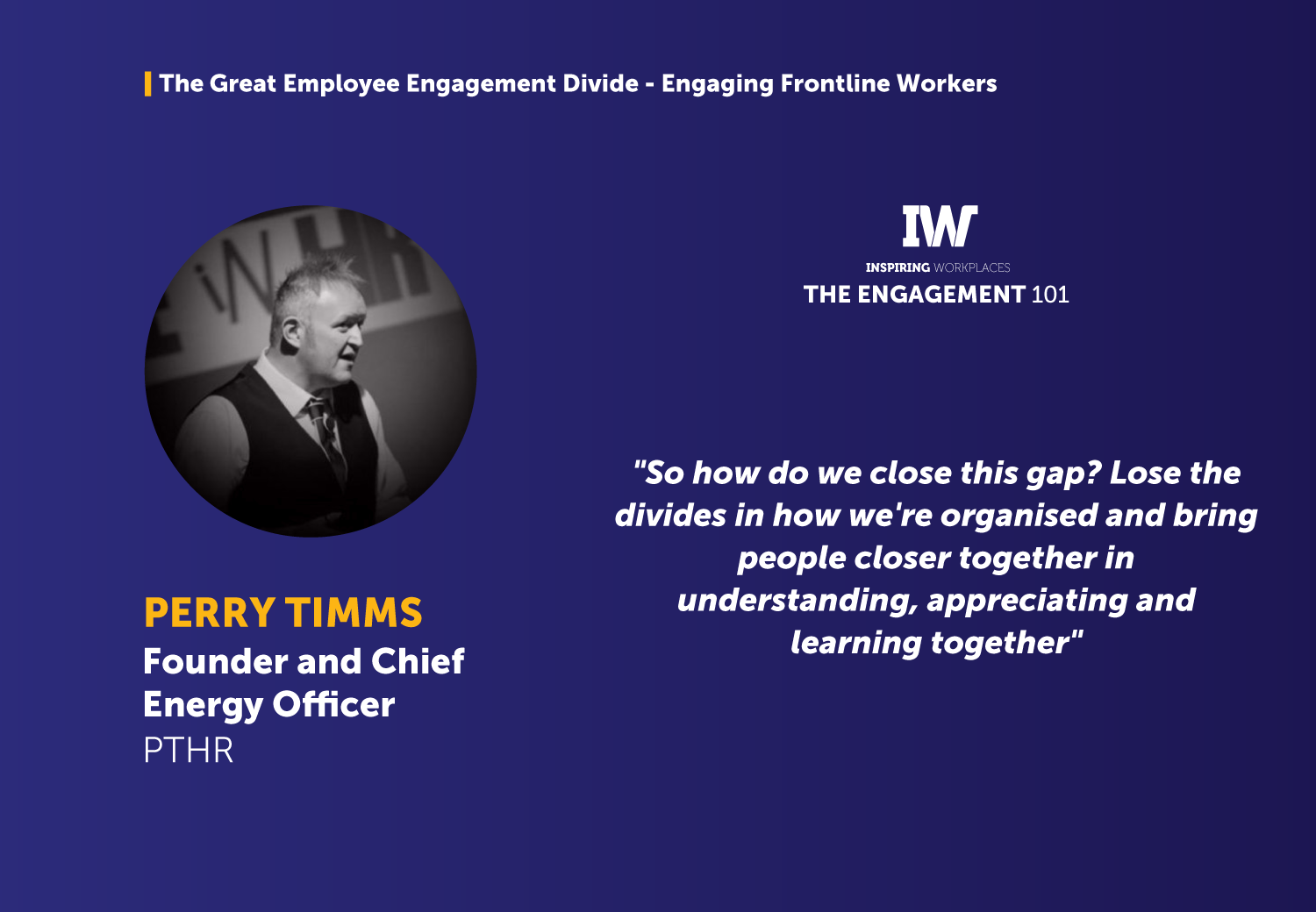
23rd November 2021
The Great Employee Engagement Divide – Engaging Frontline Workers – Perry Timms

This snippet is part of our Ebook The great Employee Engagement Divide – Engaging Frontline Workers. Advice and suggestions from our Top 101 influencers. You can download the full eBook with all the advice here.
Perry Timms, Founder and Chief Energy Officer, PTHR
Sad though it is, I’m not surprised by the two different reactions to the concept of engagement. It’s a divide that I believe has always been in existence and the pandemic response has further fractured this.
I’ve seen ‘centre/field” discourse of this nature before, hence not being surprised. In essence, the centre/HQ/Knowledge workers are seen as privileged actors in the play, whereas the reverse is an underappreciation of the strategic inputs of the knowledge workers that keep the work in the field viable, efficient and effective.
I’ve seen one example where this has been successfully tackled, but before I reveal this, the problem isn’t so much about misunderstanding or bad attitudes, but a system that keeps people in that separated state. Verticals. Divisions. Divided by design and therefore divisive by nature.
The example I saw was in a print services firm of about 200 people. Instead of vertical alignment, teams were arranged as horizontals across disciplines into “houses”. So marketing, finance, HR, research, client development, operations, logistics were organised in these houses. They belonged to their professional “clan” (e.g. Finance) but allied to House of Gryffindor, Hufflepuff, Ravenclaw, and Slytherin. They decided on Harry Potter houses, clearly!
This gave each house a greater appreciation of each other’s work. They would share the work they were doing, challenges, learn from each other and generally help each other.
So how do we close this gap? Lose the divides in how we’re organised and bring people closer together in understanding, appreciating and learning together.

